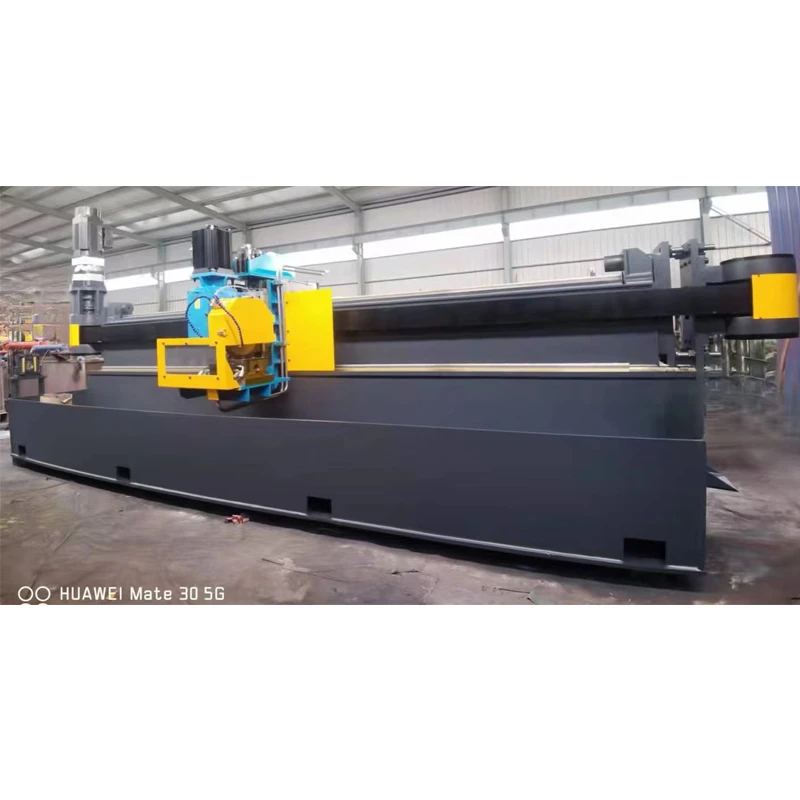Pallet Decoiler Solutions for Efficient Material Handling and Distribution System
Understanding the Pallet Decoiler A Crucial Tool in Metal Fabrication
In the ever-evolving world of metal fabrication, efficiency and precision are paramount. Among the array of tools that facilitate these elements, the pallet decoiler stands out as an essential apparatus in the processing of metal sheets and coils. This article delves into the functions, benefits, and significance of pallet decoilers in the industry.
A pallet decoiler is primarily used to unroll and feed metal strips or coils into different types of machines, including shearing machines, rolling mills, and presses. This tool works by securely holding a coil of metal on a pallet, allowing for smooth and controlled unwinding. The importance of this process cannot be overstated; a well-operated decoiler streamlines the workflow, minimizes material waste, and enhances the overall quality of the end product.
One of the most notable advantages of using a pallet decoiler is the time efficiency it brings to the fabrication process. Manually handling metal coils can be labor-intensive and prone to errors, particularly in terms of alignment and feeding. When a decoiler is employed, it automates many of these tasks, allowing workers to focus on more complex operations. Furthermore, the consistent tension it applies on the coil ensures that the metal feeds smoothly into the production line, drastically reducing interruptions caused by jams or misalignments.
In addition to time savings, pallet decoilers contribute to enhanced safety in the workplace. Metal coils can be heavy and awkward to handle, posing significant risks to workers when managed manually. By using a pallet decoiler, the physical strain on workers is greatly reduced. Additionally, many modern decoilers come equipped with safety features such as automatic shut-off systems and guards that prevent access to dangerous moving parts, further ensuring a safer working environment.
pallet decoiler

Moreover, the versatility of pallet decoilers is worth noting. These machines can be adapted to handle a variety of materials, including different thicknesses of steel, aluminum, and other alloys. Many decoilers also offer adjustable speeds and the ability to operate in different orientations, making them suitable for various production setups. This flexibility enables manufacturers to efficiently manage multiple projects without the need for extensive reconfiguration.
As industries increasingly prioritize sustainability, pallet decoilers also play a role in minimizing material waste. When used correctly, they facilitate the smooth handling of metal, ensuring that only the necessary amount is processed and reducing scrap. This not only makes operations more cost-effective but also aligns with the growing demands for environmentally friendly practices in manufacturing.
Looking ahead, the future of pallet decoilers seems promising, especially with advancements in technology. Integrating automation and IoT (Internet of Things) capabilities can further increase the efficiency and precision of these tools. Smart decoilers that can communicate with other machines in the production line may one day become the norm, allowing for real-time adjustments and optimizations based on material conditions and production requirements.
In conclusion, a pallet decoiler is an invaluable asset in the realm of metal fabrication. Its role in enhancing efficiency, ensuring workplace safety, offering versatility, and promoting sustainability cannot be understated. As the metalworking industry continues to innovate, pallet decoilers will undoubtedly adapt, remaining an integral component of modern manufacturing processes. Businesses that leverage this technology will likely find themselves at the forefront of productivity and quality, ensuring their competitiveness in a dynamic market.
-
High Frequency Straight Seam Welded Pipe Production Line-BzZhou Xinghua Machinery Equipment Manufacturing Co., LTD.|Precision Welding, High EfficiencyNewsJul.30,2025
-
High Frequency Straight Seam Welded Pipe Production Line|BzZhou Xinghua|Precision Welding&EfficiencyNewsJul.30,2025
-
High Frequency Straight Seam Welded Pipe Production Line - BzZhou Xinghua|Precision Engineering&EfficiencyNewsJul.30,2025
-
High-Frequency Straight Seam Welded Pipe Production Line-BzZhou Xinghua Machinery Equipment Manufacturing Co., LTD.NewsJul.30,2025
-
High-Frequency Straight Seam Welded Pipe Production Line-BzZhou Xinghua Machinery Equipment Manufacturing Co., LTD.|Precision Manufacturing, High EfficiencyNewsJul.30,2025
-
High Frequency Straight Seam Welded Pipe Production Line-BzZhou Xinghua Machinery Equipment Manufacturing Co., LTD.|Precision Steel Pipe Manufacturing&Industrial EfficiencyNewsJul.29,2025


